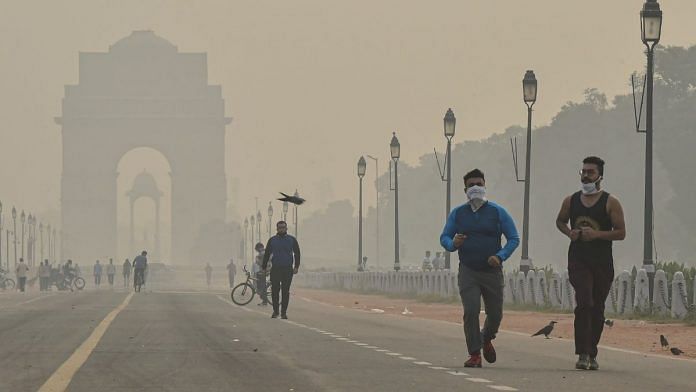New Delhi: The national capital’s air quality was recorded in the ‘very poor’ category on Monday morning and the share of stubble burning in the city’s PM2.5 pollution is likely to increase, according to a central government agency.
The Ministry of Earth Sciences’ air quality monitor, SAFAR, said the wind direction and the wind speed is favourable for the transport of the pollutants from farm fires in Haryana, Punjab, and other neighbouring regions to Delhi.
The contribution of stubble burning in Delhi’s PM2.5 concentration was 19 per cent on Sunday, it said.
The city recorded an air quality index (AQI) of 343 at 10 am on Monday. The 24-hour average AQI was was 349 on Sunday.
An AQI between 0 and 50 is considered ‘good’, 51 and 100 ‘satisfactory’, 101 and 200 ‘moderate’, 201 and 300 ‘poor’, 301 and 400 ‘very poor’, and 401 and 500 ‘severe’.
Calm winds and low temperatures allow accumulation of pollutants while favourable wind speed help in their dispersion.
The central government’s Air Quality Early Warning System For Delhi said the predominant surface wind direction is northwesterly with wind speed up to 12 kmph, favourable for transport of pollutants from farm fires.
A large number of farm fires were observed over Punjab, Haryana and Uttar Pradesh, which is likely to impact Delhi-NCR’s air quality, it said.
The air quality warning system said the ventilation index a product of mixing depth and average wind speed is likely to be 15,000 metre square per second on Monday favourable for dispersion of pollutants.
Mixing depth is the vertical height in which pollutants are suspended in the air. It reduces on cold days with calm wind speed.
A ventilation index lower than 6,000 sqm/second, with average wind speed less than 10 kmph, is unfavourable for dispersal of pollutants.
Also read: Stubble burning still a problem, but let’s control Delhi’s internal pollution, says Gopal Rai






